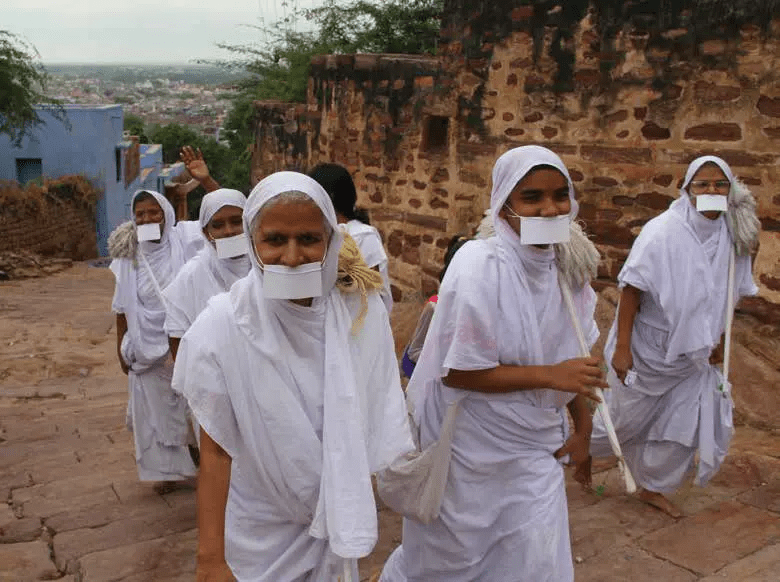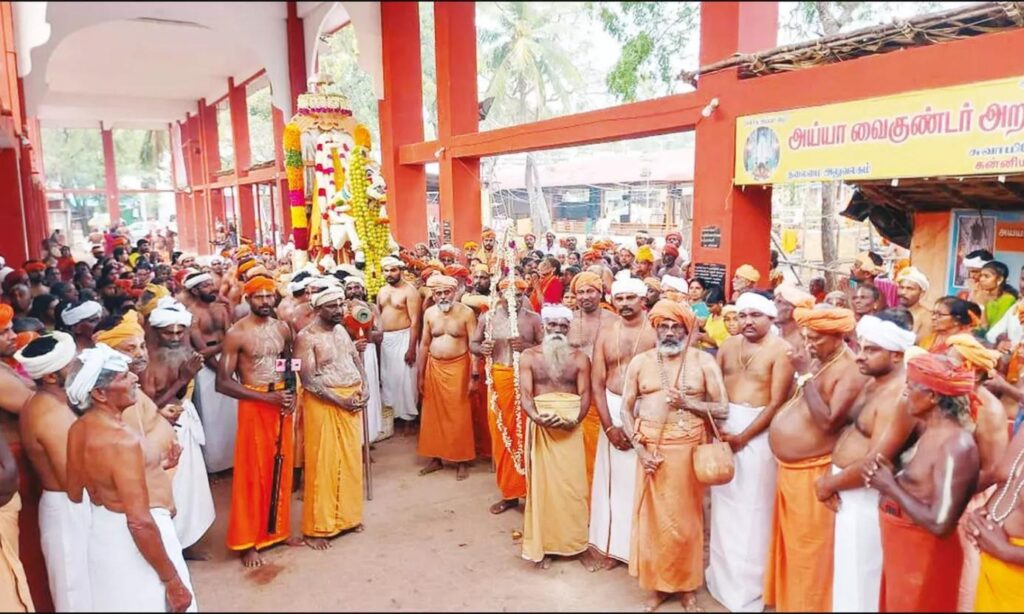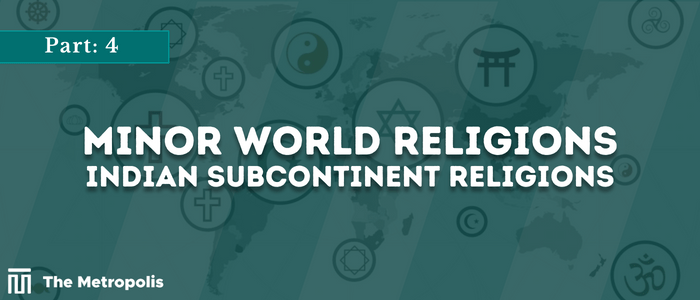Anjum Anam –
In the study of religion, the five largest and most widely practiced religious movements — Hinduism, Buddhism, Judaism, Christianity, and Islam — are grouped under the heading of “world religion”. Other world religions including Taoism, Jainism, Sikhism, Zoroastrianism, and the Baháʼí Faith are also included in this group by some academics. These are frequently compared to other classifications by academics, like indigenous religions and new religious movements. These religions are essentially considered minor ones.

Sikhism
In the late 15th century, the Punjab region of the Indian subcontinent saw the founding of the Sikhism religion and philosophy. They are referred to as Sikhs. Gurmat (Punjabi: “the Way of the Guru”) is the name of the religion of the Sikhs. Sikhism was founded by Guru Nanak (1469–1539), and nine more Gurus followed him in succession, according to Sikh history.
Sikhs hold the belief that a single spirit possessed all 10 human Gurus (Guru Nanak Dev, Guru Angad Dev, Guru Amar Das Sahib, Guru Ram Das Sahib, Guru Arjan Dev, Guru Har Gobind Sahib, Guru Har Rai Sahib, Guru Har Krishan Sahib, and Guru Tegh Bahadur Sahib).
After the passing of the 10th Guru, Guru Gobind Singh (1666–1708), the spirit of the eternal Guru was transferred to the Guru Granth Sahib (also known as the Adi Granth, or “First Volume”), the sacred text of Sikhism, and was subsequently regarded as the only Guru.
There were over 25 million Sikhs in the world at the beginning of the 21st century, with the vast bulk of them residing in the Indian state of Punjab.
The traditional Sikh story, which derives the majority of its details from hagiographic fiction and lore and cannot be historically validated, is the basis for the examination of the lives of the 10 Gurus that follow. Throughout, especially in the passages on the early Gurus, it is important to keep this in mind.
The Harmandir Sahib in Amritsar, North India, popularly referred to as the Golden Temple, is a popular destination for Sikh pilgrims. Sahib is an expression of respect, while Harmandir means “The Temple of God”.
Amritdhari Khalsa Sikh men are required to don the 5 K’s and a turban following the Sikh Code of Conduct (Sikh Rehat Maryada). Turban wearing is still optional for baptized women and is not compulsory. Additionally, it makes it quite plain that Sikh women should not conceal their faces with veils of any kind, as is customary in Indian, Islamic, or Judeo-Christian traditions.
Sikh men and women are not allowed to have their noses or ears pierced to wear jewelry. Sikhs are not permitted to wear any symbols of other religions. Sikhs are not allowed to wear hats or leave their hair uncovered. In addition, they are not permitted to wear any jewelry that has body piercings.
Sikhs are not permitted to consume any animal’s “Kutha” meat, which is processed more like a pagan sacrifice ceremony than halal meat. They are also not permitted to use any kind of drugs, alcohol, or tobacco.
The Khalsa’s Five K’s tradition was started by Guru Gobind Singh Ji.
-
Kesh: uncut hair.
-
Kangha: a wooden comb.
-
Kara: an iron or steel bracelet worn on the wrist.
-
Kirpan: a sword.
-
Kachera: short breeches/underwear for men.

Jainism
One of the world’s oldest religions, Jainism has its roots in India and dates back at least 2,500 years. The liberation from the never-ending cycle of rebirth and the attainment of the all-knowing condition known as Moksha are the two spiritual pursuits of Jainism. This can be accomplished through leading a life of ahimsa, or nonviolence, with the least amount of harm to other living things.
The traditions of Jainism were largely carried forward by a succession of 24 Tirthankaras – Adinatha, Ajita, Sambhava, Abhinandana, Sumati, Padmaprabha, Suparshva, Chandraprabha, Suvidhi, Shital, Shreyansa, Vasupujya, Vimala, Ananta, Dharma, Shanti, Kunthu, Ara, Malli, Muni Suvrata, Nami, Nemi, Parshva and Mahavira. Vardhamana Mahavira was the last of the Tirthankaras and likely a contemporary of Gautama Buddha.
The necessity of self-control, meditation, and an ascetic lifestyle as the means to redemption was stressed by both Mahavira and Buddha. Their teachings frequently contrasted with those of Vedic priests of the time, who placed a strong emphasis on ritualistic observances and their function as go-betweens between humans and the gods.
According to Jainism, the best way to achieve enlightenment is by nonviolence and minimizing harm to all living creatures, including plants and animals. Jains hold the same reincarnation beliefs as Hindus and Buddhists. One’s karma determines how often one will experience birth, death, and reincarnation.
Between four and five million people practice Jainism, with the majority of them living in India, where the census from 2011 put their number at about 4.5 million. Some of the greatest Jain populations outside of India can be found in Canada, Europe, and the United States.

Ayyavazhi
Ayyavazhi is a Tamil monistic group that dates back to the middle of the 19th century and means “path of the father” in Tamil. It was only regarded as a branch of Hinduism officially and not religiously because it was not recognized as a distinct religion.
Although it is not recognized by the government, it has developed into a unique religious phenomenon that is particularly noticeable in the southern Indian districts of Kanyakumari, Tirunelveli, and Tuticorin. Its quick expansion had been recorded in the records of Christian missionaries from the middle of the 19th century, making it one of the fastest-growing sects in southern India.
Ayya Vaikundar is the subject of Ayyavazhi; in Akilattirattu Ammanai, the sect’s sacred book, he is described as the Manu avatar of Trimurthi. The teachings of Ayya Vaikundar and the holy writings of Akilattirattu Ammanai and Arul Nool serve as the foundation for the religion’s concepts and philosophy.

Ahmadiyya
A late 19th-century Islamic messianic sect called Ahmadiyya emerged in Punjab, British India. It was established by Mirza Ghulam Ahmad (1835–1908), who insisted that he had been chosen by God to serve as both the Promised Mahdi (Guided One) and Messiah who were supposed to emerge in the last days and bring about the peaceful triumph of Islam.
Ahmadi Muslims adhere to the same sacred texts and teachings as mainstream Muslims. They also acknowledge the Holy Prophet (saw). However, some think that a new prophet could emerge as a reformer after him. Ahmadis also hold that Islam is the last and ideal religion for people.
The sect’s ideology is unconventional in some ways; for instance, it holds that Jesus pretended to die and rise from the dead before actually escaping to India, where he passed away at the age of 120.
Following the passing of Ahmad’s successor, Maulana Nur ad-Din, in 1914, the movement split in two, with one group affirming Ahmad’s messianic status (The Ahmadiyya Movement in Islam) and a second group viewing him as a reformer but otherwise adhering to traditional Islamic beliefs that understand Muhammad to be the final prophet (The Lahore Ahmadiyya Movement).
The majority of Sunni and Shi’a Pakistanis view the Ahmadiyya movement as unorthodox, and Ahmadiyya Muslims have experienced marginalization, different forms of discrimination, and occasionally violent oppression. According to the majority of Pakistanis today, Ahmadis were classified as a non-Muslim minority in national law in 1974, and constitutional changes in 1973 forbade an Ahmadi from being president. These laws have caused Pakistani police to destroy Ahmadi copies of the Qur’an and their commentaries, forbid Ahmadis from writing their confession of faith (kalima) on their gravestones, forbid Ahmadis from building mosques, and even forbid Ahmadis from using the term “masjid” (or “mosque”).



